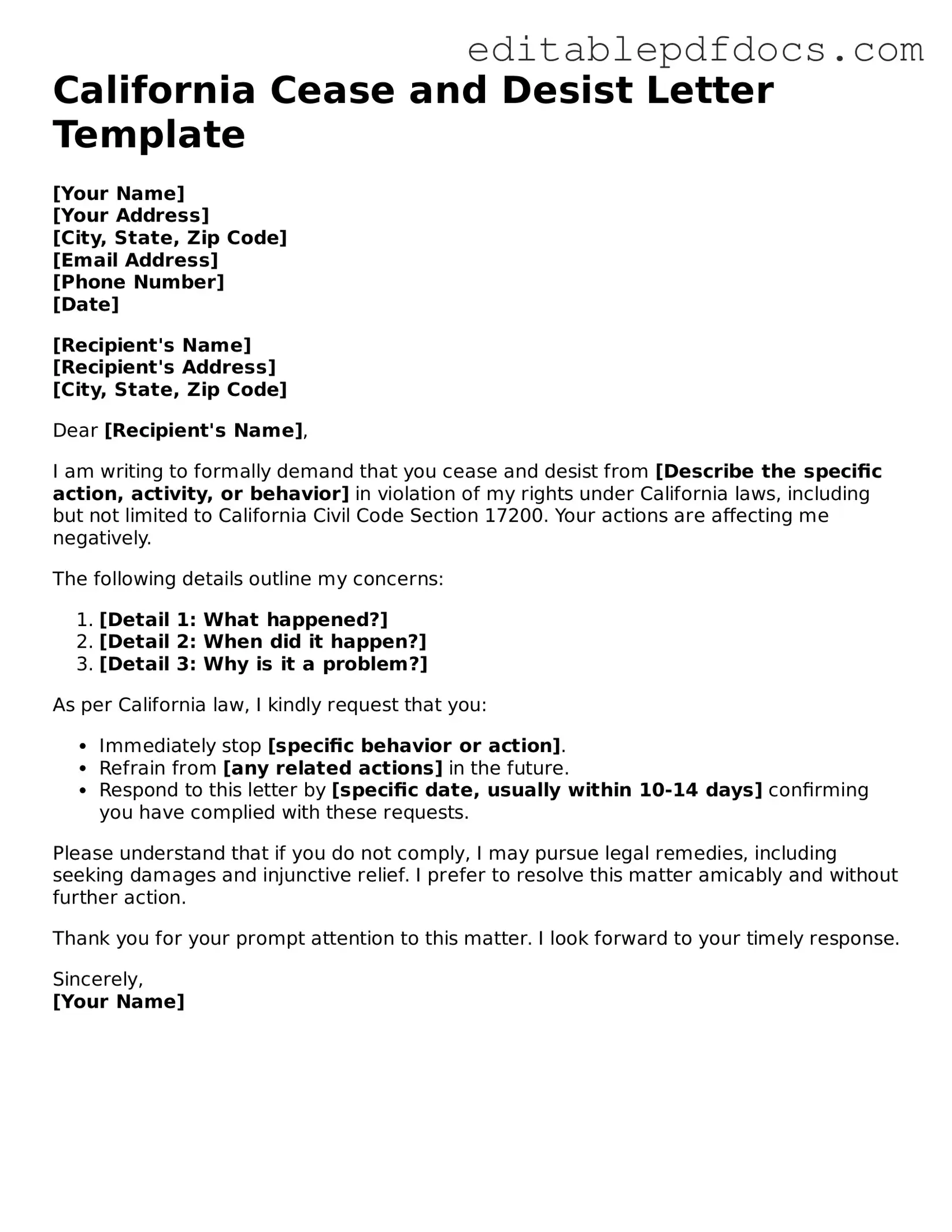In California, a Cease and Desist Letter serves as a vital tool for individuals and businesses seeking to address unlawful actions or behaviors. This document effectively communicates a demand to halt certain activities, whether they involve copyright infringement, harassment, or other forms of misconduct. Crafting a clear and concise letter is essential, as it outlines the specific actions that are objectionable and provides a timeline for compliance. Additionally, the letter often includes a warning about potential legal action if the recipient fails to comply. Understanding the key components of this letter, such as the identification of the parties involved, a detailed description of the objectionable behavior, and the desired outcome, can empower individuals to protect their rights while maintaining a professional tone. Whether you are a business owner safeguarding your intellectual property or an individual seeking to resolve a personal dispute, knowing how to utilize a Cease and Desist Letter can be a crucial step in asserting your position effectively.
